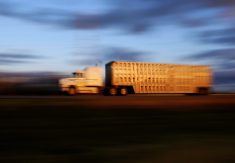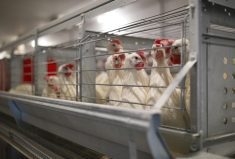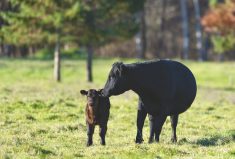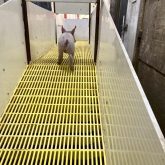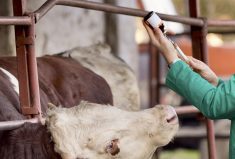The organization that represents Canada’s cattle feeders is staying one step ahead of changing consumer demands, through a new feedlot animal care assessment program.
“The National Cattle Feeders’ Association decided that it wanted to be proactive and develop a national animal care assessment program for feed yards,” said Dr. Joyce Van Donkersgoed, a feedlot veterinarian from Coaldale, Alta., who acts as a technical adviser for the provincial and national cattle feeders’ associations.
“We’re responding to our customers, whether it’s the processors or the consumers. They want to be reassured that we are raising animals with care and doing all the right things.”
Read Also

Revamp started on Canada’s national pig code
The code that sets Canada’s standards care and handling of pigs is up for review, a process expected to be compete by 2028.
Work on the program began two years ago, through a committee that included animal welfare experts, feedlot operators, and major processors like JBS, Cargill, and Tyson. Using the National Farm Animal Care Council’s framework, the committee developed a “plain and simple” tool for assessing “whether producers are implementing the requirements in the codes of practice,” said Van Donkersgoed.
The assessment tool is based on the recently revised beef code of practice, which includes requirements for protection from inclement weather, access to food and water, pain mitigation for castration and dehorning (coming in 2016), and other animal welfare considerations.
“It’s a tool for the feedlot producer to use to assess his own practices on farm and identify areas for improvement,” she said.
The voluntary program was driven, in part, by increasing consumer awareness and concerns about animal welfare in livestock agriculture.
“Processors need to reconfirm with retailers that their suppliers are practising good animal husbandry on farm,” said Van Donkersgoed.
“If a processor needed to come on farm to do a second- or third-party evaluation of the animal care practices on that feedlot, they could use our assessment tool.”
Pilot testing
The program is still in the early phases, with pilot testing being conducted this summer to ensure the tool is “as simple and easy to use as possible for the feedlot operators,” said Van Donkersgoed.
“Our pilot test is probably one of the most important things to provide feedback from the producers themselves on what does and does not work,” she said, adding that the tests will be conducted in different-size feed yards across the country.
“What might work in a large 25,000-head commercial feedlot in Alberta might be quite different from a 5,000-head feeder in an enclosed barn in Ontario. There’s quite a bit of diversity across the country in feedlot production, so we need to make sure that what’s designed will work across Canada.”
The program shouldn’t create more work for farmers, she said, though there may be “minor tweaking” needed to their documentation systems.
“Most producers — especially cattle feeders — are doing these things, but often, they do them but don’t document,” said Van Donkersgoed.
“On a lot of these things, I don’t see that there would be any concerns at all, because producers are already doing these things. There just may be the odd requirement for additional written procedures, like a written castration protocol.”
The National Cattle Feeders’ Association will be developing generic templates for producers to make the documentation process easier, she said.
“That information will all go up on the Cattle Feeders’ website, so producers can then download some of these forms and just fill in the blanks. In a matter of five minutes, they’ll have their protocol.”
The “market-driven” program should be finalized by next spring — and it couldn’t come at a better time, she said.
“Animal health and welfare are key pillars of global sustainable beef production, so we need to be at the forefront,” she said. “We need to be leaders in this. We need to be proactive. We need to do these things to stay in business.
“We always talk about our social licence to operate, and animal care is part of that social licence to operate.”




